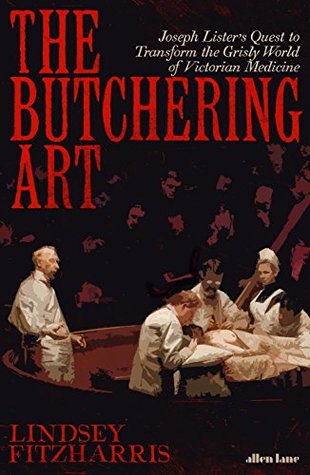More on this book
Community
Kindle Notes & Highlights
Read between
July 18 - July 28, 2019
Mesmerism—named after the German physician Franz Anton Mesmer, who invented the hypnotic technique in the 1770s—had also failed to be accepted into mainstream medical practice in the eighteenth century. Mesmer and his followers thought that when they moved their hands in front of patients, a physical influence of some kind was generated over them. This influence created positive physiological changes that would help patients heal and could also imbue a person with psychic powers. Most doctors remained unconvinced. Mesmerism enjoyed a brief revival in Britain in the 1830s, when the physician
...more
The surgeon thus began his evolution from an ill-trained technician to a modern surgical specialist in those first decades of the nineteenth century. As an instructor at one of the newly built teaching hospitals in London, Robert Liston was very much a part of this ongoing transformation. At six feet two, Liston was eight inches taller than the average British male. He had built his reputation on brute force and speed at a time when both were crucial to the survival of the patient. Those who came to witness an operation might miss it if they looked away even for a moment. It was said of Liston
...more
This highlight has been truncated due to consecutive passage length restrictions.
The traumas of the operating theater could take a toll on student spectators too. The Scottish obstetrician James Y. Simpson fled an amputation of the breast when he was studying at the University of Edinburgh. The sight of the soft tissues being lifted with a hook-like instrument and the surgeon preparing to make two sweeping cuts around the breast proved too much for Simpson. He forced his way back through the crowd, exited the theater, hurried through the hospital gates, and made his way up to Parliament Square, where he declared breathlessly that he now wished to study law. Fortunately for
...more
Like many surgeons operating in a pre-anesthetic era, Liston had learned to steel himself against the cries and protests of those strapped to the blood-spattered operating table. On one occasion, Liston’s patient, who had come in to have a bladder stone removed, ran from the room in terror and locked himself in the lavatory before the procedure could begin. Liston, hot on his heels, broke the door down and dragged the screaming patient back to the operating room. There, he bound the man fast before passing a curved metal tube up the patient’s penis and into the bladder. He then slid a finger
...more
The term “etherization” was coined, and its use in surgery was celebrated in newspapers around the country. News of its powers spread. “The history of Medicine has presented no parallel to the perfect success that has attended the use of ether,” the Exeter Flying Post proclaimed. Liston’s success was also trumpeted in the London People’s Journal: “Oh, what delight for every feeling heart … the announcement of this noble discovery of the power to still the sense of pain, and veil the eye and memory from all the horrors of an operation …. WE HAVE CONQUERED PAIN!”
With Robert Liston’s ether triumph, Lister had just witnessed the elimination of the first of the two major obstacles to successful surgery—that it could now be performed without inflicting pain. Inspired by what he had seen on the afternoon of December 21, the deeply perceptive Joseph Lister would soon embark on devoting the rest of his life to elucidating the causes and nature of postoperative infections and finding a solution for them.
The surgeon was very much viewed as a manual laborer who used his hands to make his living, much like a key cutter or plumber today. Nothing better demonstrated the inferiority of surgeons than their relative poverty. Before 1848, no major hospital had a salaried surgeon on its staff, and most surgeons (with the exception of a notable few) made very little money from their private practices.
Arrangements for the disposal of human waste were equally rudimentary before the passing of the Public Health Act in 1848, which established the centralized General Board of Health and initiated a sanitarian revolution. Before then, many streets in London were effectively open sewers, releasing powerful (and often deadly) amounts of methane. In the worst housing developments, lines of domiciles known as “back-to-backs” were separated only by narrow passageways four to five feet wide. Trenches brimming with piss ran down the middle. Even the increased number of water closets between 1824 and
...more
For the uninitiated, the dissection room was a waking nightmare. The French composer and former medical student Hector Berlioz jumped out of a window and ran home, later recalling that it was “as though Death himself and all his grisly band were hot on my heels” the first time he stepped into a dissection room. He described an overwhelming feeling of revulsion at the sight of “the limbs scattered about, the heads smirking, the skulls gaping, the bloody cesspool underfoot,” and “the repulsive stench of the place.” One of the worst sights, he thought, was of the rats nibbling on bleeding
...more


